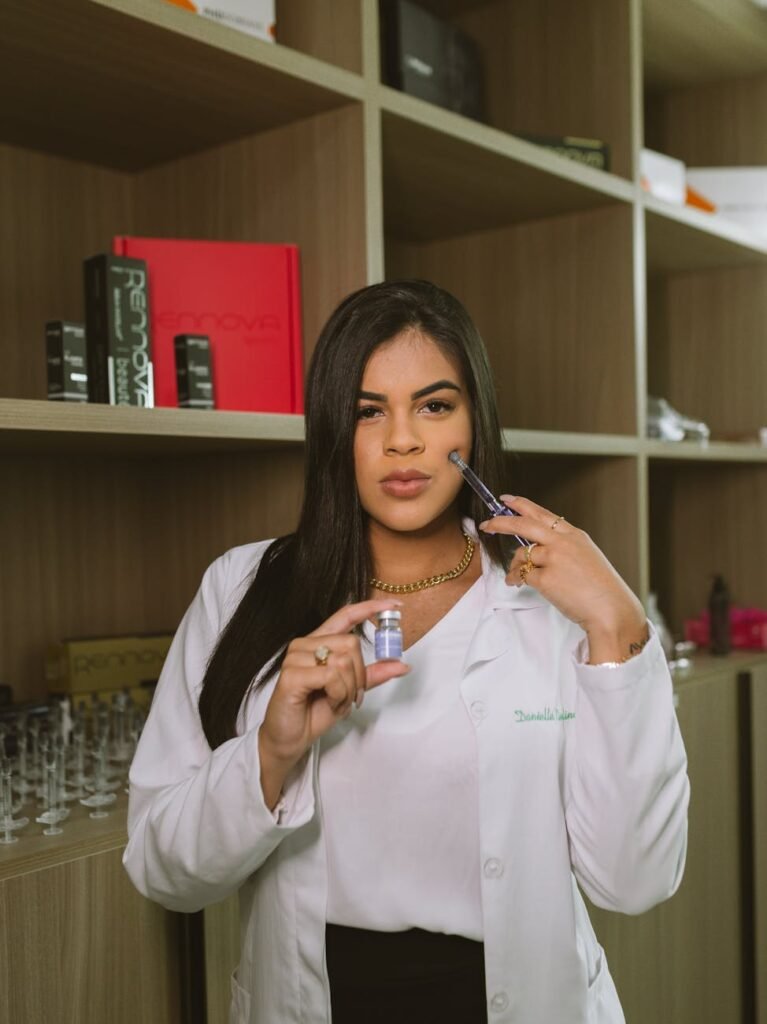Understanding Relational Therapy
Relational therapy is all about drawing the curtains back on how we connect.It’s about finding those meaningful relationships that cheer us on, especially when life throws us a curveball. This kind of therapy zooms in on how we talk and play nice with others as a way to grow and heal.
Basics of Relational Therapy
Think of relational therapy as the next chapter after good old-fashioned psychoanalytic treatment inspired by some of the seasoned minds in the field (Therapy Helpers). It trades in the traditional hard-nosed methods for focusing more on the chats between therapist and client. Way back, guys like Freud figured out this whole idea of teaming up with your therapist, which has evolved to get right into the importance of having a human connection when it comes to emotional and psychological healing.
Here are some of the neat tricks in the relational therapy toolbox:
- Emotion-focused therapy
- Role-playing
- Reflective listening exercises
These goodies help create a chill zone where folks can get a handle on their relationship habits and step up their people skills. Relational therapy is your go-to for dealing with things like:
- Anxiety
- Depression
- Trauma
- PTSD
- Mood swings
- Eating struggles
- Addictions
Importance of Healthy Relationships
Having good relationships is like your morning coffee for emotional well-being—it just makes everything better. Relational therapy hangs its hat on a couple of core ideas:
- Communication Skills: Learn how to spell out your feelings and what’s on your mind.
- Emotional Regulation: Grab ahold of those emotions and make ’em work for you.
- Attachment Styles: Dive into understanding these so you can up your relationship game.
| Aspect | Importance |
|---|---|
| Communication Skills | Talk about your feelings without missing a beat. |
| Emotional Regulation | Tame the emotional rollercoaster. |
| Attachment Styles | Build bridges, not walls. |
The mission here is to nurture those good vibes between people. It’s a real game-changer for folks on rocky terrains, struggling with personal identity, past trauma, or facing off against cultural differences. If you’re curious for more information, why not poke around relational Therapy, relational life therapy, object relations therapy, and cultural relational Therapy?
Relational-Cultural Therapy (RCT)
Theoretical Foundation of RCT
Relational-Cultural Therapy (RCT) is all about relationships, digging into how connections and breakups shape our psyche. Created by Jean Baker Miller along with her colleagues at the Stone Center, Wellesley College, RCT sprang from feminist Therapy and critical theories (Counseling Collective). They’re not fans of the solo ride; it’s all about moving away from being a lone wolf and instead thriving in connections.
RCT’s goal is to help folks find more meaningful and supportive bonds. Relationships aren’t just nice to have; they’re key to emotional healing and growth. RCT illuminates how cultural and social contexts affect relationships, recognizing the role of power and cultural influences on bond quality and personal well-being.
Key Principles of RCT
Relational-Cultural Therapy is built on some solid principles, all aiming to boost psychological growth by focusing on relationships. Here’s what RCT stands by:
- Mutual Empathy and Empowerment: The aim here is to have both parties in a relationship feel heard and understood. Mutual empathy is about creating a nice back-and-forth, making both feel valued.
- Growth-Fostering Relationships: We’re social creatures at heart, this says. Relationships that boost growth let you respect and influence others while staying open to change (Beyond Intractability).
- Relational Resilience: Relationships are like shields against life’s challenges, especially for folks dealing with marginalization. RCT digs into the rips and tears caused by society’s pressures, providing a framework for stronger bonds (Counseling Collective).
- Cultural and Social Contexts: Understanding the backdrop of a relationship is critical. Power plays and cultural vibes deeply affect how we connect and our well-being.
- Healing through Connection: This highlights the importance of human connection as medicine for the soul. It is especially important for those who have felt left out, hurt, or alone, as it shows how healing happens through the bonds we form.
When theseideas come together, they create a space where folks can grow and thrive through supportive and strong connections.
Table: Key Principles of RCT
| Principle | Description |
|---|---|
| Mutual Empathy and Empowerment | Promotes understanding and appreciation in relationships. |
| Growth-Fostering Relationships | Relationships based on respect, influence, and an openness to change. |
| Relational Resilience | Fosters toughness through connections, particularly for marginalized groups. |
| Cultural and Social Contexts | Addresses power issues and cultural influences on how relationships grow. |
| Healing through Connection | Stresses the healing power of relationships for emotional health, notably for those facing marginalization. |
Want to know more about relational therapy? Check out our relational therapy page. You can also explore other incredible methods, such as relational life therapy and cultural relational therapy.
Relational Therapy Techniques
Relational therapy techniques are like magic glue that help folks communicate better, know themselves a bit more, control their emotions, and patch up those old wounds. Let’s chat about three top-notch techniques in this relationship toolkit: listening like you mean it, understanding attachment styles, and preventing emotions from running the show.
Active Listening
Active listening is a game-changer in relational therapy. The therapist gets right in there, really tuning into the client, not missing a beat. It’s about soaking in what they say, giving feedback to show you’re on the same page, and getting the drift of how they feel. Now, why do you wanna be a superstar listener?
- It gets the talk flowing, back and forth
- Builds tighter bonds
- Creates a chill zone for sharing
Main bits of active listening:
- Eye Contact: Locking eyes shows you’re all in.
- Nodding: Gives the green light for them to keep talking.
- Paraphrasing: Putting their words into your own to show you’ve got it.
Exploring Attachment Styles
Getting to know your attachment style is like having the cheat code for relationships. These styles, shaped when we’re little, impact how we relate to others—and ourselves—today. Sussing them out helps therapists guide clients towards more awesome, healthier ways of connecting.
The four main characters in this story:
- Secure: Cool with closeness and flying solo.
- Anxious: You always need reassurance; you know how it is.
- Avoidant: Keeps affection at arm’s length.
- Fearful-Avoidant: Craves closeness but dreads it too—tricky!
Therapists use these insights to:
- Work through old scars
- Spruce up the current love life
- Foster better ways of loving and being loved
Promoting Emotional Regulation
Managing emotions is crucial when relationships get a bit wild. Relational therapy focuses on helping people get their emotional ducks in a row—spotting the triggers, riding out the storms, and finding that sweet spot of emotional zen.
How to go about it:
- Spotting the Triggers: Knowing what sets you off.
- Coping Techniques: Mastering tricks like breathing deep, practising mindfulness, or jotting thoughts in a journal.
- Self-Compassion: Treating yourself kindly when emotions surge.
For even more relationship-boosting techniques, from emotion-focused tricks to role-playing, visit Therapy Helpers.
These therapy gems help folks craft more substantial, more reliable connections—enhancing chat skills, empathy, and emotional wisdom. Whether you’re sorting through spats, sticky attachment issues, or dusting off some ancient baggage, these methods offer a solid ground to heal and grow. For more therapy chats, check out our other guides on relational therapy, relational life therapy, and object relations therapy.
Applications of Relational Therapy
Relational therapy, particularly Relational-Cultural Therapy (RCT), has many uses. RCT’s heart is about forming satisfying relationships, speaking your mind, and feeling better through connections. So, let’s explore how RCT tackles relationship conflicts, mends trauma, and builds relationship skills.
Relationship Conflicts
We all know how relationship conflicts can pop up out of nowhere—whether it’s misunderstandings, unmet needs, or long-buried issues. Relational therapy digs up the roots of those clashes. By getting folks to talk openly and really listen, this therapy encourages folks to share their feelings honestly.
| Problem | Therapy Solution |
|---|---|
| Misunderstandings | Encourages clear talk for better understanding. |
| Unmet Needs | Supports sharing and sorting out needs in the relationship. |
| Deep Issues | Looks at how the past affects today’s habits (Carepatron). |
If you’re curious about the techniques, check out relational therapy.
Trauma Healing
Trauma can seriously mess with forming healthy bonds. RCT acts as a guide for healing trauma through connecting with others. By investigating how trauma throws a wrench into relationships, people can shift their perspectives and foster healthier interactions..
| Trauma Concern | Healing Method |
|---|---|
| Relational Dysfunction | Therapists help clients spot and change harmful patterns. |
| Emotional Upset | Includes teaching emotional control and self-insight. |
| Trust Problems | Builds reliance with consistent empathy in therapy (Carepatron). |
For other trauma therapies, visit relational life therapy.
Skill Development in Relationships
Developing relationship skills is a big aim in relational therapy. Folks pick up tricks for talking better, managing emotions, and settling disputes. These skills boost personal relationships and overall happiness.
| Skill | How It’s Developed |
|---|---|
| Communication | Involves listening actively and clearly sharing feelings. |
| Emotional Control | Involves learning to handle feelings sparked by relationships. |
| Conflict Fixing | Includes learning to negotiate and solve issues sensibly (Therapy Helpers). |
For skill-building methods, check out object relations therapy.
Additional Resources
Dive deeper into specific relational therapy tactics and uses:
- Cultural relational therapy
- Tips for straightening curly hair (a fun, unrelated read but offers methods insight).
By sticking with these strategies, relational cultural therapy can foster healthy bonds, heal old wounds, and develop important life skills.
Relational-Cultural Theory
Relational-cultural therapy (RCT) puts relationships at the heart of human psychology, showing how our experiences are really shaped by our connections. It’s all about growing through these bonds and understanding the cultural and social factors that play a big role.
Psychological Growth through Connections
According to Relational-Cultural Theory, we’re social creatures at our core, and our growth is tied up in the relationships we keep. When people connect with empathy, respect, and a willingness to roll with changes, they grow healthily. These relationships make folks feel appreciated and understood and like they can make a positive mark on the world.
Science backs this up—brains grow when people socialize. The Social Pain/Physical Pain Overlap Theory shows how social hurt, like being left out, lights up the same brain areas as physical pain. This shows how crucial connection is for humans and highlights the growth we can achieve through supportive relationships.
Main Ideas:
- Mutual Empathy: Empathy means being open to feeling what others feel and letting them do the same.
- Respect and Empowerment: Relationships that help us grow and respect each person’s experiences, making both feel empowered.
- Open Communication: Good chat habits like listening and role-playing are key for understanding and growth.
Impact of Cultural and Social Contexts
Recognizing the cultural and social scenes where people live is crucial for Relational-Cultural Therapy (RCT). RCT spotlights how larger cultural forces and power plays impact the quality of relationships and personal well-being. Knowing this helps therapists tackle the unique hurdles faced by those who feel marginalized or alone.
Cultural Know-How:
- Embracing Diversity: Therapists need to be tuned into cultural differences in how relationships work.
- Power Plays: Noticing and addressing power mismatches helps foster healthy relationships.
- Social Whirl: Therapists must consider how the wider world, such as gender roles or money issues, affects people’s interactions.
| Context | Relationship Impact |
|---|---|
| Cultural Norms | Set expectations and behaviors |
| Power Dynamics | Impact empathy and respect |
| Social Swirl | Affect access to backing and resources |
Weaving all this into therapy boosts RCT’s effectiveness. By understanding cultural and social settings, therapists can better help people tackle their relationship issues.
Want to know more about the basics? Check out our article on relational therapy. You can also see how these ideas help heal trauma and sort out relationship conflicts through relational life therapy and object relations therapy.
Culturally Competent Mental Health Services
Gaps in Mental Health Services
Mental health care in the U.S. has a bumpy road, especially for ethnic minorities such as African Americans, American Indians, Asian Americans, and Hispanics. These folks often either skip out on mental health services or wave goodbye too soon (NCBI). Compared to white Americans, these groups tend to get the short end of the stick when it comes to quality care, access, and effective treatments.
| Population Group | Access to Mental Health Services | Quality of Care |
|---|---|---|
| White Americans | High | High |
| African Americans | Low | Low |
| American Indians | Low | Low |
| Asian Americans | Low | Low |
| Hispanics | Low | Low |
With the U.S. being a melting pot, these documented differences in health services mean we need a fair shake for everyone, pushing for mental health care that respects all cultures (NCBI).
Models of Cultural Competence
The APA and other organizations are all focused on culturally competent mental health care. Cultural competence isn’t just a buzzword; it’s about the therapist’s awareness, knowledge bankroll, and vibe with clients.
Therapist-Focused Models
- Awareness – Therapists gotta dig deep into their own biases and understand the backgrounds their clients come from.
- Knowledge – Getting keen on the world’s different cultures, experiences, and viewpoints.
- Skills – Mastering the art of connecting and chatting with folks from all walks of life.
Skill-Based Approaches
These methods focus on crafting techniques that therapists can use to deal with cultural differences and translate therapy into what makes sense for everyone.
Process-Oriented Models
It’s like dancing; these models are about the give-and-take between client and therapist, emphasizing building relationships that are respectful and informed by culture. Therapists get ongoing training and tweak their styles to fit their clients like a comfy pair of shoes.
| Model Type | Key Components | Focus |
|---|---|---|
| Therapist-Focused | Awareness, Knowledge, Skills | Therapist’s Characteristics |
| Skill-Based | Techniques, Strategies | Effective Interventions |
| Process-Oriented | Client-Therapist Interactions, Reflective Practices | Relationship Building |
Cultural Competency Interventions
Spreading cultural competence involves mixing and matching strategies to address gaps in mental health services. These efforts work on all levels, from the individual to the whole organization.
- Training and Education – Keeping therapists schooled on cultural competence so they can sharpen those skills.
- Cultural Adaptation – Tweaking therapy to fit the cultural vibe of the clients.
- Community Engagement – Partnering up with community leaders to build bridges and get the word out on mental health.
- Policy Development – Setting rules that push for cultural consideration and put diverse needs front and centre.
When mental health professionals take these steps, they make strides toward fairness and better outcomes for people of all cultures. Check out our articles for more on relational therapy, cultural relational therapy, and object relations therapy.
Diving into cultural competence is a must for facing the needs of our diverse crew and growing through those human connections (relational cultural therapy).












